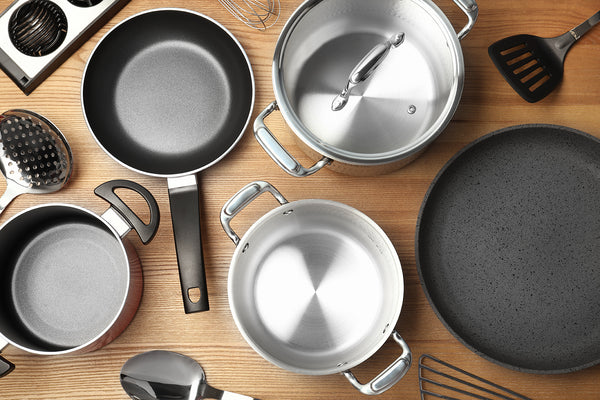The Hidden Dangers of Non-Stick Pans: A Closer Look at Health and Environmental Concerns
In the fast-paced world of modern cooking, non-stick pans have become a staple in many kitchens, offering an convenience and ease of use. However, beneath their slick surfaces lies a controversy that warrants our attention. In this article, we delve into the potential dangers associated with non-stick pans, shedding light on both health and environmental concerns.
Perfluorinated Compounds (PFCs) and Health Risks
Non-stick pans are typically coated with a layer of polytetrafluoroethylene (PTFE), a synthetic material better known as Teflon. When these pans are exposed to high heat, they can release perfluorinated compounds (PFCs) into the air and food. PFCs have been linked to a range of health issues, including:
Toxic Fumes: Overheating non-stick pans can release toxic fumes that may cause flu-like symptoms, commonly referred to as "Teflon flu." These fumes can be particularly harmful to pet birds and small animals.
Potential Carcinogenicity: Some studies suggest that long-term exposure to PFCs may be associated with an increased risk of certain cancers, although more research is needed to establish a definitive link.
Bioaccumulation: PFCs have the ability to accumulate in the human body over time, potentially leading to adverse effects on organs and systems.
Environmental Concerns
Aside from the health risks, non-stick pans pose environmental challenges and concerns
Persistent Pollutants: PFCs are known to be persistent in the environment and do not easily break down. This can lead to their accumulation in soil, water, and wildlife, contributing to long-term pollution.
Manufacturing Impact: The production of non-stick pans involves the use of perfluorooctanoic acid (PFOA), a compound associated with PFCs. PFOA has been linked to environmental contamination and adverse effects on human health.
Safer Alternatives and Precautions
As the dangers of non-stick pans become more evident, it's important to be aware of some safer cooking alternatives:
Cast Iron: Cast iron cookware is known for its durability and natural non-stick properties when properly seasoned. It can withstand high temperatures without releasing harmful chemicals.
Stainless Steel: Stainless steel pans offer a reliable option for cooking without the need for non-stick coatings. They are easy to clean and can handle a variety of cooking methods.
Ceramic Cookware: Ceramic-coated pans provide a non-stick surface without the use of PTFE or PFCs. However, it's crucial to choose high-quality brands that use safe materials.
While non-stick pans have revolutionized the way we cook, their potential dangers should not be ignored. Health risks associated with perfluorinated compounds and the environmental impact of their production and disposal highlight the need for safer cooking alternatives. By making informed choices and opting for alternatives like cast iron, stainless steel, or ceramic cookware, we can prioritize both our well-being and the health of the planet.
The Hidden Dangers of Non-Stick Pans

